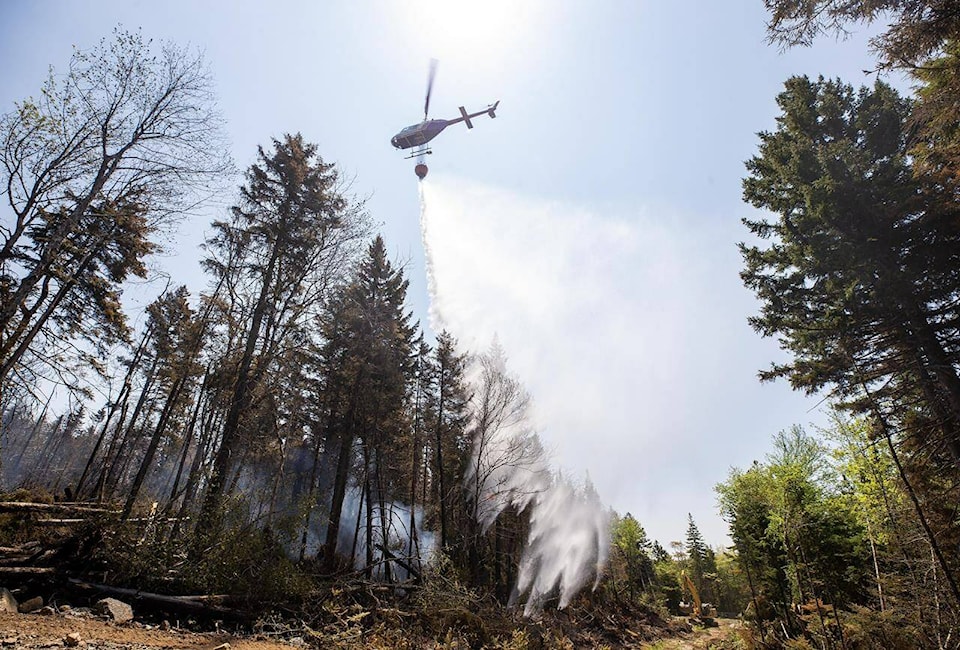Scattered showers moved across parts of Nova Scotia this morning, providing some relief to a province still struggling with one of its worst wildfire seasons on record.
But fire officials in the Halifax area said the light rain wasn’t enough.
“While it was welcome, it will hold us for only a number of hours,” Dave Steeves, a forest technician with the Department of Natural Resources, told a briefing at a command post in Upper Tantallon, N.S., not far from where a Halifax-area wildfire started Sunday.
“Little embers can hide. We’re looking in rotten stumps. We’re looking under piles of moss, under big chunks of rock. We get a phenomenon called holdover — those small embers hide … and when you think everything’s fine, they can come back to the surface and you can get a reignition.”
Still, the forecast is calling for steady rain tonight and into Saturday. As well, morale remains high among the firefighters who spent a hot, dry Thursday putting out spot fires in the Halifax area, said deputy fire Chief Dave Meldrum.
And later Friday, buses were to start bringing displaced residents to see what is left of their homes in the evacuation zone near Upper Tantallon and Hammonds Plains.
“We need to treat our residents with the greatest empathy and respect,” Meldrum said. “This is obviously very traumatic for them.”
About 200 structures, including 151 homes, have been destroyed in the Halifax area.
In all, more than 16,000 people were evacuated from their homes and businesses. The suburban Halifax fire remains out of control, though 50 per cent of it had been contained by Thursday night.
In the southwestern corner of the province, a much larger wildfire continued to burn out of control in Shelburne County, where 6,700 people have been evacuated from their homes — about half of the municipality’s population.
The Barrington Lake fire continued to grow on Thursday, reaching 200 square kilometres — the largest recorded wildfire in the province’s history. It has consumed 50 homes and cottages since Saturday.
On Thursday, a small fleet of water bombers took aim at the big fire amid soaring temperatures and extremely dry conditions.
While a small amount of rain fell over the Halifax area, no rain was reported in Shelburne County, where there is concern about the possibility of thunderstorms producing lightning strikes Friday afternoon. Steeves said lightning would ground all aircraft and make it unsafe for crews on the ground.
Meanwhile, the provincial government said six more aircraft would be flying in from the United States Friday and over the weekend. As well, an unspecified number of firefighters from the U.S. and Costa Rica are on their way.
In Ottawa, federal officials announced Thursday that more than 300 firefighters from the United States and South Africa are heading to Canada to battle what has become an unprecedented wildfire season.
In Halifax, the RCMP confirmed that 10 summary offence tickets had been recently handed to people violating a provincewide ban on outdoor fires. Mayor Mike Savage said Thursday that at least two people in the Halifax area were fined Wednesday night after one was caught lighting leaves on fire with a propane torch and another decided to have a bonfire.
“This is a clear violation of the ‘no-stupid’ policy” the mayor said.
Michael MacDonald, The Canadian Press
READ MORE: Fifth day of fighting major wildfires in Nova Scotia could prove pivotal
